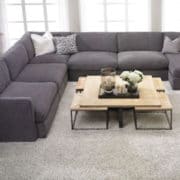In the first instance, it is necessary to understand the makeup of the zebra shades. The very term cellular or alternatively honeycomb would describe the structure of the blinds that are made of cells of fabric which are arranged in a honeycombed structure. This is done to allow a layer of air to come between the two sides of the top down blinds and is used primarily for two purposes.
Cellular Shades provide thermal insulation
A good part of the use of cellular shades is to keep out the heat or to keep in the warmth. In both the cases, having an insulating layer of air trapped in a series of honeycombs does help keep the elements under control. It is indeed possible to vary the extent of insulation by using more complex structures for the cellular structures used in the shades.
When it comes to the honeycomb used in the cellular shades, it is usual to specify if it is the single-layered, the double layered or the triple-layered one. Mostly the more the layers, the thicker is the insulating material that comes between the two rolls of fabric that makes up the window blinds. The layered structured construction is used to provide better mechanical strength to the screens and to keep the shades compact in shape.
Controlling the light into a room with cellular shades
One of the pressing needs to use cellular shades is to control the amount of light that is let into a room using these discount top down bottom up shades. There are the blackout shades that are meant to be used to keep the external light out of the area specifically. Cellular blinds need not be constructed with the sole intention of controlling the light into a room but are very useful when it does come to this application.
Besides, it is possible to use different fabric material at either side of the honeycomb layer to have better control over the lighting factor. Often the fabric covering is used to provide an aesthetic value to the product, and it is the cellular comb that more or less controls the elements.
Making sense of the R values in Honeycomb Shades
The R-value in the cellular shades gets to define the amount of insulation provided by the particular top down honeycomb design. Thus a higher R-value would mean a much thicker structure as compared to a lower R-value. So it makes it convenient for the customers to understand the suitability of the cellular shades to the situation by making a reference to the R count.
For the single-celled structures, the R-value typically range from 1.6 to 2.8 imperial, the double layered ones would be between 2.8 and 4.0 imperial and the triple-layered ones over the 4.3 imperial. It would be possible to put the R-value to proper perspective by considering that the typical single fabric window shades have an R-value of 0.9 imperial.
Thus the R-value can be a very convenient reference point to use each time a cellular shade is being considered for use.



